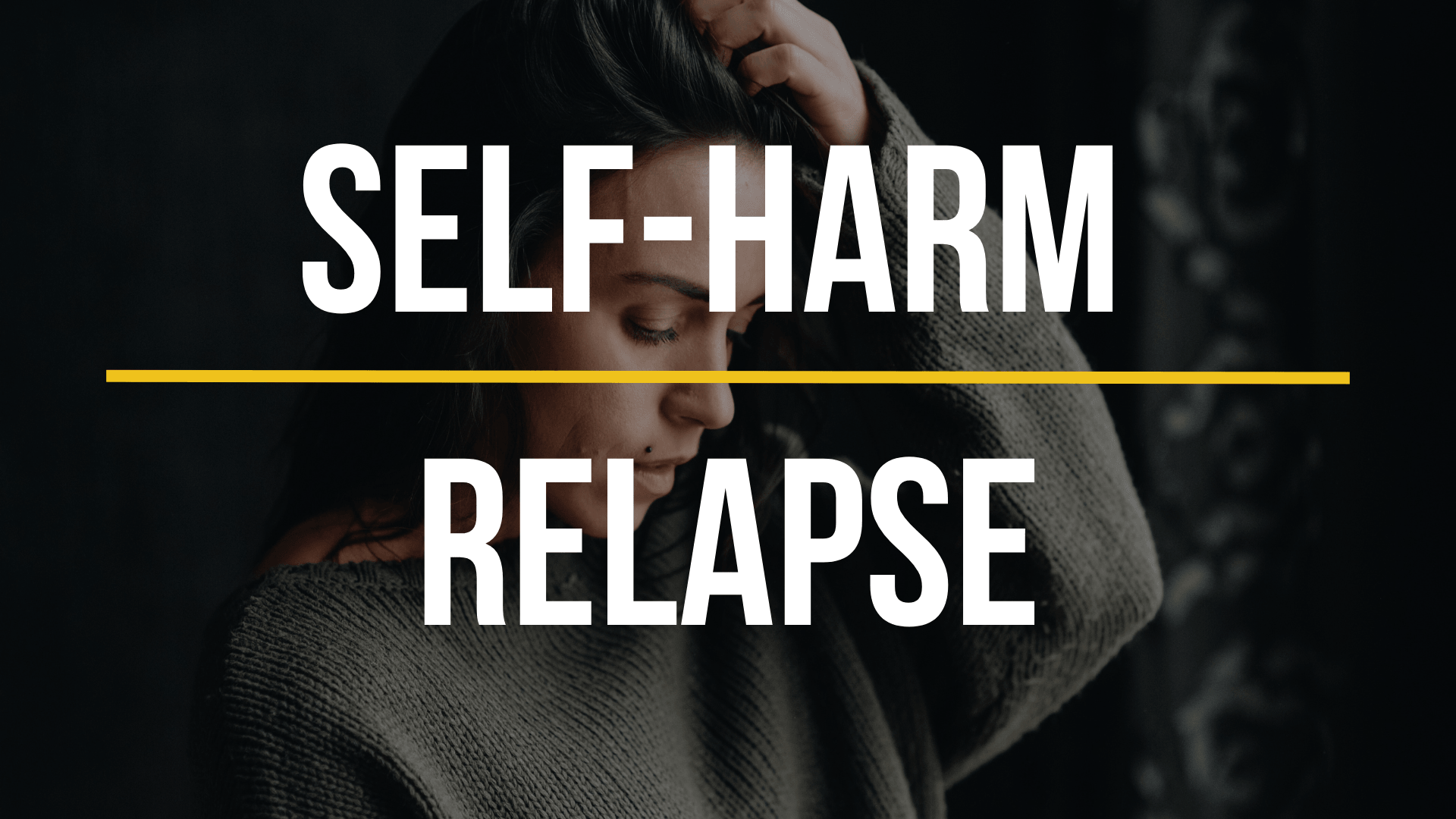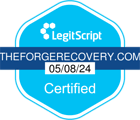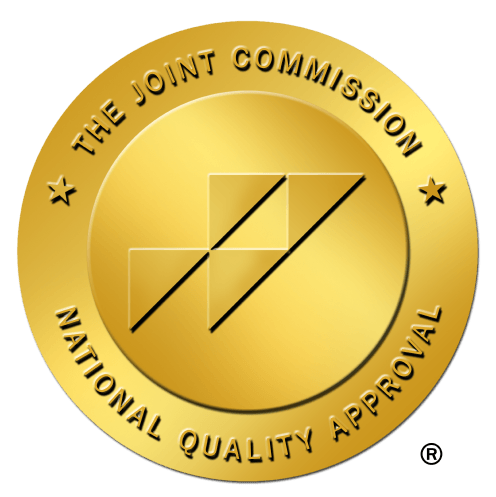What Is Self-Harm Relapse?


Self-harm relapse is returning to self-injury after stopping. Seeking support from both professionals and loved ones is key to healing and further prevention.
Self-harm relapse is when someone returns to self-injuring behaviors after a period of stopping or reducing these actions. This can include cutting, burning, hitting, or other forms of self-injury.
If you’re experiencing this, know that you’re not alone. Many people struggle with self-harm relapse, and it’s important to remember that help is available. There are resources, treatment options, and support systems ready to assist you in finding healthier ways to cope with emotional pain.
Let’s explore what self-harm relapse means, and how you can navigate through it.
What Is Self-Harm Relapse?
Self-harm relapse is purposely injuring oneself after staying away from or decreasing self-harming activities, generally as a coping mechanism for emotional pain or suffering. It involves a return to self-destructive behaviors that a person may have previously engaged in or suffered with, such as cutting, burning, hitting, or other types of self-injury. Let's break the term "self-harm relapse" to better understand what it means:
Self-Harm
Self-harm, often called non-suicidal self-injury (NSSI) or self-mutilation, is the purposeful physical harm done to one's body as a coping mechanism for intense feelings, stress, or emotional instability. It’s not typically a suicide attempt, but rather a way for individuals to release or distract from emotional pain.
Relapse
When a person relapses into substance abuse after sobriety, the term "relapse" is frequently used in connection with addiction recovery. Relapse, in the context of self-harm, is the act of resuming self-destructive behavior after a break.
Self-harm relapse can be a challenging and distressing experience for those who struggle with it. It usually means that the person's underlying emotional or psychological problems have resurfaced, and self-harm is being used as a coping mechanism. The development of healthy coping methods, support from loved ones, and professional assistance are frequently necessary for overcoming self-harm recurrence.
What To Do After Self-Harm Relapse
After experiencing a self-harm relapse, it's crucial to stay calm, seek immediate first aid if needed, reach out for support, and focus on setting realistic goals for recovery. Remember, setbacks are a normal part of the process — but with support, you can heal from your experience.
Stay Calm
If you have relapsed, try to remain calm and non-judgmental. Self-harm relapse is a sign that you're struggling and it's alright to get treatment; it does not mean you've failed.
Immediate First Aid
Handle any injuries as soon as possible, primarily if the self-harm resulted in serious wounds (such as deep cuts). If necessary, seek medical care.
Reach Out for Support
Speak with a family member, friend, therapist, or helpline, such as a crisis hotline or a suicide prevention line if needed. Sharing your thoughts and feelings with others may provide support and emotional comfort.
Safety First
Make sure you are in a secure setting. To lessen the possibility of additional injury, remove any equipment or things you may use to injure yourself.
Avoid Self-Blame
Acknowledge that relapsing into self-harm is a normal part of the recovery process for many people. Don't blame yourself; concentrate on what you can learn from the situation.
Consider Professional Help
If you haven't already, think about finding a therapist, counselor, or psychiatrist who focuses on self-harm or associated problems. They can help you address the root cause of psychological and emotional issues that lead to self-harm.
Explore Alternative Coping Strategies
Find healthier methods to handle emotional stress or discomfort by working with a mental health expert. These practices could involve meditation, deep breathing, writing, or creative activities.
Develop a Safety Plan
Create a safety plan in collaboration with a therapist or counselor. This strategy should include specific actions, like calling a friend, using grounding techniques, or doing something distracting when you feel the urge to harm yourself.
Stay Connected
Keep in touch with the supportive people in your family and friends. Maintaining contact with your support system is essential since isolation worsens emotional suffering.
Self-Compassion
Exercise self-care and compassion for yourself. Even if you've had a setback, be fair to yourself and acknowledge your healing progress.
Monitor Triggers
Consider the factors that caused the relapse. Knowing these triggers might help you create plans to control or prevent them.
Set Realistic Goals
Self-harm recovery is not a straight line, and setbacks can occur. Ensure your goals are reasonable, and try not to be too harsh on yourself if your progress is sluggish.
Are You Struggling with Mental Health or Addiction?
We Can Help. Call Us Now!
CALL: 877-839-1772
How To Prevent Self-Harm Relapse
Preventing self-harm relapse requires patience and dedication. Seeking out professional help, identifying triggers, creating a safety plan, and practicing healthy coping mechanisms are all key to prevention. Also, consider staying connected with a support network, and prioritizing self-care to maintain your progress.
Professional Help
Consult a mental health professional, such as a therapist, counselor, or psychiatrist. They can help you address the underlying issues contributing to self-harm and provide effective coping strategies.
Therapeutic Interventions
Engage in evidence-based therapy or counseling, such as cognitive-behavioral or dialectical behavior therapy, which can help you manage self-harming behaviors.
Identify Triggers
Recognize the triggers that lead to self-harm, such as stress, anxiety, depression, loneliness, or particular situations. By understanding these triggers, you can work on strategies to cope with them more effectively.
Create a Safety Plan
Develop a detailed safety plan with the help of a mental health professional. This plan should outline what to do when you feel the urge to self-harm, including who to contact, coping techniques, and distractions.
Coping Mechanisms
Explore healthier coping mechanisms to replace self-harm, such as deep breathing exercises, mindfulness, journaling, art, exercise, or hobbies.
Support Network
Build a strong support system of friends and family who understand your struggles and are willing to offer emotional support during difficult times. Open and honest communication is critical.
Self-Care
Prioritize self-care in your daily routine. This includes getting enough sleep, eating balanced meals, exercising regularly, and practicing relaxation techniques.
Mindfulness and Grounding Techniques
Learn and practice mindfulness and grounding exercises to help you stay present in the moment and manage overwhelming emotions.
Avoid Triggers
Avoid situations, people, or environments that trigger the urge to self-harm whenever possible. Creating physical and emotional distance from triggers can be crucial.
Regular Check-Ins
Stay in regular contact with your mental health professionals, even when feeling stable. This ongoing support can help prevent relapses.
Self-Monitoring
Keep a journal to track your emotions, triggers, and self-harm urges. This self-monitoring can help you identify patterns and develop strategies to manage them.
Emergency Contacts
Have a list of emergency contacts readily available, including therapists, crisis hotlines, friends, or family members you can contact in times of crisis.
Positive Distractions
Create a list of positive distractions or activities you can turn to when you feel the urge to self-harm. These could include watching a favorite movie, listening to music, or walking.
Celebrate Progress
Recognize and celebrate your progress in managing self-harm urges and reducing the frequency of self-harm. Acknowledging your achievements can boost your motivation.
Stay Patient
Remember that recovery is a journey with ups and downs. Be patient with yourself and understand that setbacks can happen. Focus on learning from them and moving forward.
How To Tell Someone You Had A Self-Harm Relapse
Telling someone you've had a self-harm relapse can be a difficult and emotional conversation. Still, it's important to reach out for support when you need it. You can handle this conversation by following the steps listed below:
Choose a Trusted Person
Choose a conversation partner you can trust and feel at ease with first. It may be a close friend, a relative, a teacher, or a guidance counselor. You need a friend or supporter who will pay attention to you.
Find a Quiet and Private Place
Find a private and peaceful area so you won't be disturbed. You may speak honestly and without embarrassment in this way.
Be Honest and Clear
When prepared to speak, be honest and open about what happened. You might say, "I need to tell you something important. I've been struggling with self-harm again."
Explain Your Feelings
Let them know how you're feeling and what caused the relapse. You may say, "I've been feeling really overwhelmed and stressed lately, and I didn't know how else to cope."
Emphasize You Want Help
Tell the individual you are contacting them because you need their assistance and support. Say, "I'm telling you because I don't want to keep doing this, and I need help to stop."
Answer Questions Honestly
Be ready for inquiries or expressions of worry from the person. If you don't know the answer, be honest while responding. Not having all the answers is OK.
Ask for Their Support
Tell them what kind of help you need. It may help find a therapist or counselor or someone to talk to while you're struggling. Tell them how they can help you.
Discuss Next Steps
Determine what actions you can do collectively based on the dialogue. This could involve learning healthy coping mechanisms, making a safety plan, or speaking with a mental health expert.
Stay Connected
Keep in touch with the person you trusted after the conversation. They will be interested in your actions because they care about you. Update them on your progress.
Are You Struggling with Mental Health or Addiction?
We Can Help. Call Us Now!
CALL: 877-839-1772
Autism And Self Harm
For some people with autism, expressing their feelings with words can be more challenging. Imagine being extremely upset or overwhelmed without having the words to express exactly how you feel. That may be not very pleasant. When persons with autism struggle to manage these powerful emotions, they may turn to self-harm as a coping mechanism. Even though it's not a good or safe method to handle things, it's like a means to get those overwhelming emotions out. But what matters is that there is help and support available.
Are You Struggling with Self-Harm Relapse? We Can Help.
Self-harm relapse is a challenging experience, but it’s important to remember that recovery is possible. If you or a loved one are struggling with the cycle of self-harm, know that you’re not alone, and help is available to get you through it all.
At The Forge Recovery Center, we offer a team of mental health experts, a range of therapies, and a supportive community to guide you toward mental wellness. Don’t hesitate to reach out for urgent support — call us today and take the first step towards healing and recovery.
Are You Struggling with Mental Health or Addiction?
We Can Help. Call Us Now!
CALL: 877-839-1772





